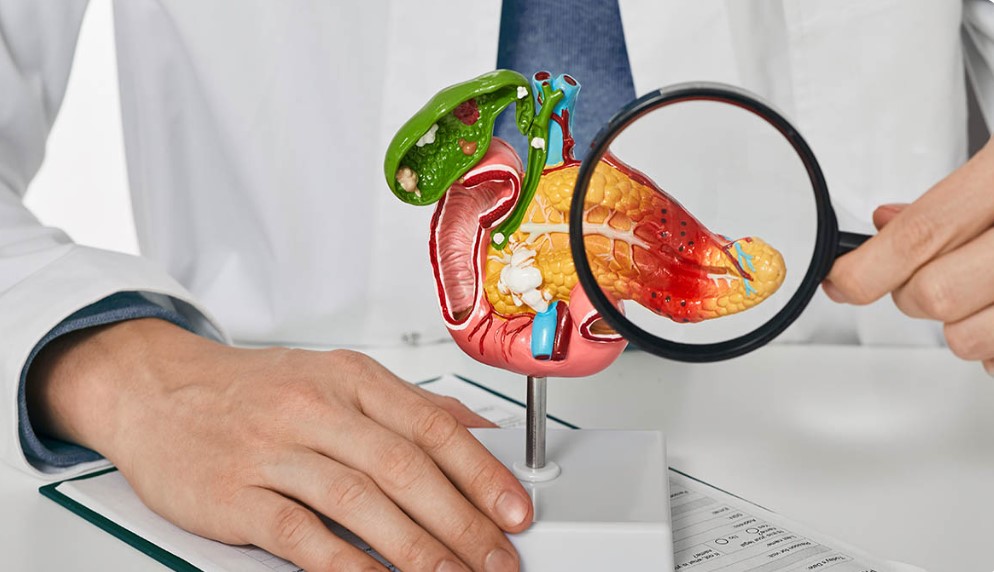The disease is rarely diagnosed in time for life-saving treatment, and removes about half a million people annually; here is what to look for.
Understanding Pancreatic can.cer

The pancreas is an essential organ located in the abdomen that plays a crucial role in digestion and hormone production. The pancreas is responsible for producing enzymes that help break down food and hormones that regulate blood sugar levels. It also produces insulin, which is needed to convert glucose into energy. (1) Pancreatic can.cer occurs when abnormal cells in the pancreas begin to grow uncontrollably, forming a tumor.
The most common type of pancreatic can.cer is called adenocarcinoma, which accounts for about 95% of all cases. This type of can.cer usually starts in the ducts that carry digestive juices from the pancreas to the small intestine. Other types of pancreatic can.cer include neuroendocrine tumors (NETs), which are less common and tend to grow slowly; and cystic tumors, which are usually benign but can become can.cerous over time. It is important to understand the early signs and symptoms of this disease in order to seek medical attention promptly. (2)
These are the ten signs of pancreatic cancer that you should never ignore
10 Signs of Pancreatic can.cer

The reason why pancreatic can.cer is often so deadly is simply because it is not caught until it is in the later stages of the disease. This is because symptoms can be difficult to spot, or may not even present themselves until the illness is already more advanced. Understanding the risk factors and symptoms of this can.cer will help you to seek intervention early, vastly improving treatment outcomes. These are the 10 most common signs of pancreatic can.cer (3):
1. Unexplained Weight Loss
Weight loss isn’t always a good thing, especially when it isn’t planned for. Sudden and unintentional weight loss, especially if accompanied by a loss of appetite, can be an early sign of pancreatic can.cer.
2. Jaundice

Yellowing of the skin and eyes can occur due to the buildup of bilirubin, a pigment produced by the liver. This can be a sign that pancreatic can.cer is blocking the bile duct.
3. Abdominal Pain
Chronic or unexplained abdominal pain, which may radiate to the back, can be a sign of pancreatic can.cer. The pain can be mild or severe and may worsen after eating.
4. Digestive Problems

Pancreatic can.cer can affect the ability of the pancreas to produce digestive enzymes, leading to indigestion, diarrhea, or oily, foul-smelling stools.
5. New-Onset Diabetes
Pancreatic can.cer can disrupt the production of insulin, resulting in the onset of diabetes in individuals who have not previously had the condition.
6. Changes in Stool
Pale, greasy, or floating stools may indicate an issue with the pancreas, which can be a sign of pancreatic can.cer.
7. Fatigue

Persistent fatigue and a lack of energy can be a symptom of pancreatic can.cer. It may be caused by a variety of factors, including anemia or the can.cer itself.
8. Back Pain

Constant or progressive back pain can be a sign that pancreatic can.cer has spread to the nerves and tissue surrounding the pancreas.
9. Blood Clots
Pancreatic can.cer can increase the risk of developing blood clots, which may present as pain, redness, swelling, or warmth in the affected area.
10. Gastrointestinal Issues

Nausea, vomiting, or a frequent feeling of fullness after eating small amounts of food can be symptoms of pancreatic can.cer, particularly if they are persistent.
Talking to Your Doctor About Pancreatic can.cer & Prevention
If you are experiencing any of the above signs and symptoms, it is important to consult with your healthcare provider. They will be able to evaluate your symptoms, perform tests, and determine the appropriate course of action if pancreatic can.cer is suspected. While there are no guaranteed ways to prevent pancreatic can.cer, adopting certain lifestyle habits may reduce your risk. These include maintaining a healthy weight, avoiding tobacco and excessive alcohol consumption, eating a balanced diet, and engaging in regular physical activity. It is also important to understand your personal risk, so that you can be on higher alert.

Risk factors for pancreatic can.cer include:
- Age: The risk of developing pancreatic can.cer increases with age. Most cases are diagnosed in people over the age of 60.
- Smoking: Cigarette smoking is the most important risk factor for pancreatic can.cer. About 20% of all cases are caused by smoking.
- Diabetes: Having diabetes increases your risk of developing pancreatic can.cer by about 50%. This is because people with diabetes have higher levels of insulin in their blood, which can promote the growth of can.cer cells.
- Obesity: Being overweight or obese increases your risk of developing pancreatic can.cer by about 20%.
- Family history: Having a close relative (parent, sibling, child) with pancreatic can.cer increases your risk of developing the disease. Inherited syndromes such as multiple endocrine neoplasia and defects in the BRCA1 and BRCA2 genes also increase risk.
- Ethnic Race: African Americans and people of Ashkenazi Jewish descent are more likely to develop pancreatic can.cer than other races.
- Exposure to certain chemicals: People who work with certain chemicals, such as those used in dry cleaning or metalworking, may have an increased risk of developing pancreatic can.cer.
- Gender: Men are more likely than women to develop pancreatic can.cer.
The Bottom Line
Pancreatic can.cer is a devastating disease, but awareness of the signs and symptoms can make a significant difference in early detection and treatment. Being familiar with the ten signs of pancreatic can.cer discussed in this article can potentially save lives. If you or a loved one experience any of these signs, it is crucial to consult a healthcare professional for further evaluation and guidance.
Sources: theheartysoul.com
- “Pancreatic can.cer.” Mayo Clinic
- “Understanding Pancreatic can.cer.” OHSU
- “Symptoms of pancreatic can.cer.” NHS
